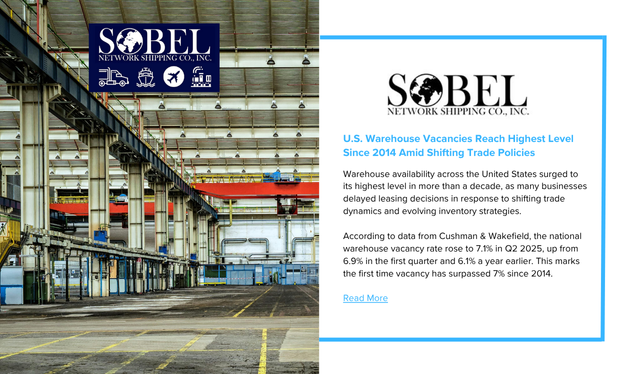Warehouse availability across the United States surged to its highest level in more than a decade, as many businesses delayed leasing decisions in response to shifting trade dynamics and evolving inventory strategies.
According to data from Cushman & Wakefield, the national warehouse vacancy rate rose to 7.1% in Q2 2025, up from 6.9% in the first quarter and 6.1% a year earlier. This marks the first time vacancy has surpassed 7% since 2014.
The increase reflects a broader market pause after a period of accelerated leasing and construction during the pandemic. Retailers, manufacturers, and wholesalers stocked up heavily earlier in the year, anticipating changes in trade rules and tariffs. Now, as those policies fluctuate, many are holding off on long-term commitments and opting instead to sublease or consolidate space.
Sublease Space Hits Record High
A record-breaking 225 million square feet of warehouse space was listed for sublease in Q2—a 25% jump from last year. This surge highlights the excess capacity left over from pandemic-era growth and companies’ desire to reduce overhead while maintaining flexibility.
Construction Slows as Demand Softens
Developers are responding cautiously. New warehouse construction deliveries dropped 45% year-over-year, with 72 million square feet completed in the second quarter. Despite this pullback, total warehouse inventory nationwide is still 19% higher than in 2019.
Leasing Activity Down, Rents Still Rising
Even with increased vacancy and reduced leasing activity—down 5% from 2019 levels—rents remain resilient. The average net rent climbed to $10.12 per square foot, up 3% from Q2 2024. This stability is partly due to the longer-term outlook many tenants adopt in industrial leasing decisions.
The warehouse real estate market continues to adjust to post-pandemic normalization and the ripple effects of policy uncertainty. While vacancy rates may remain elevated in the near term, companies are actively reevaluating their footprint strategies as clarity returns to global trade.


